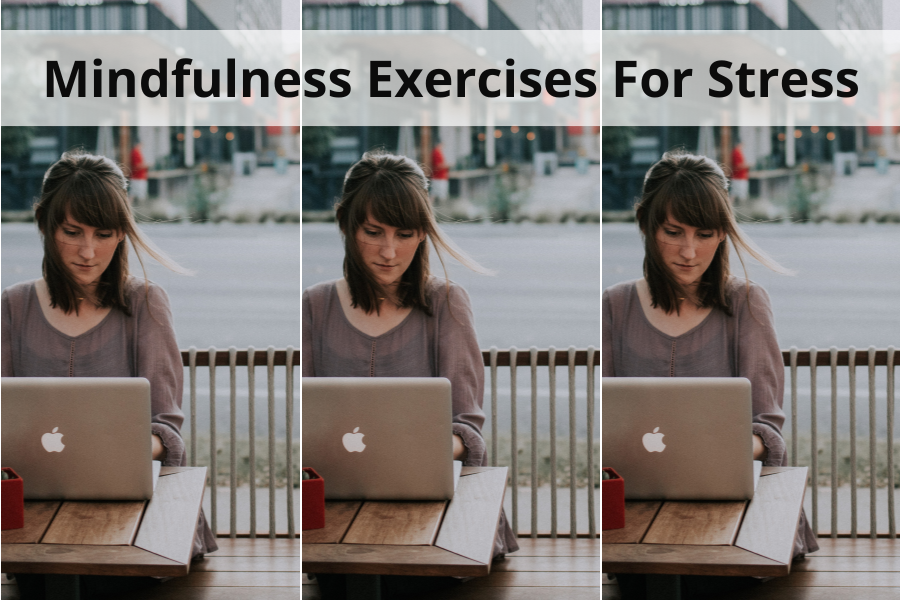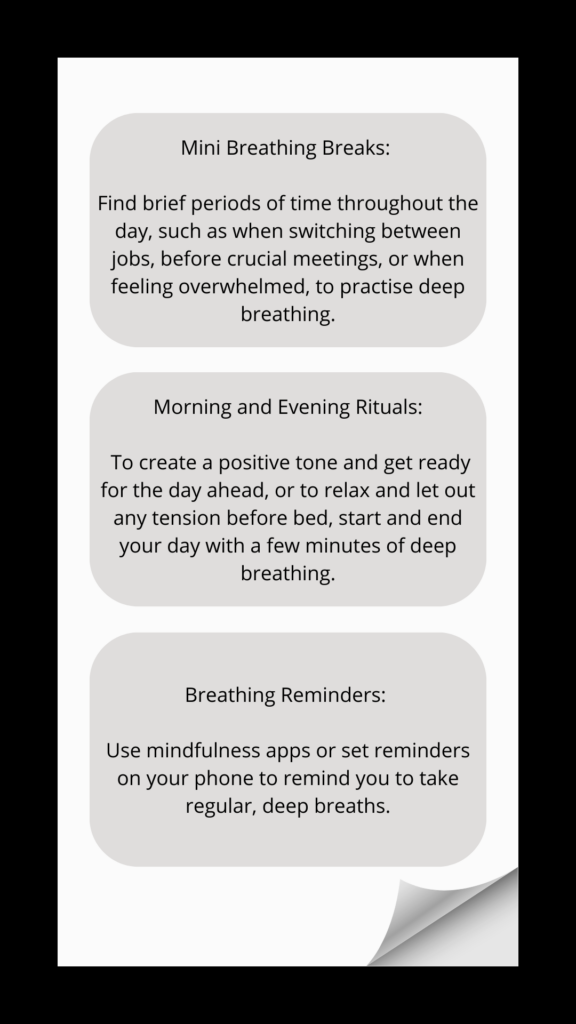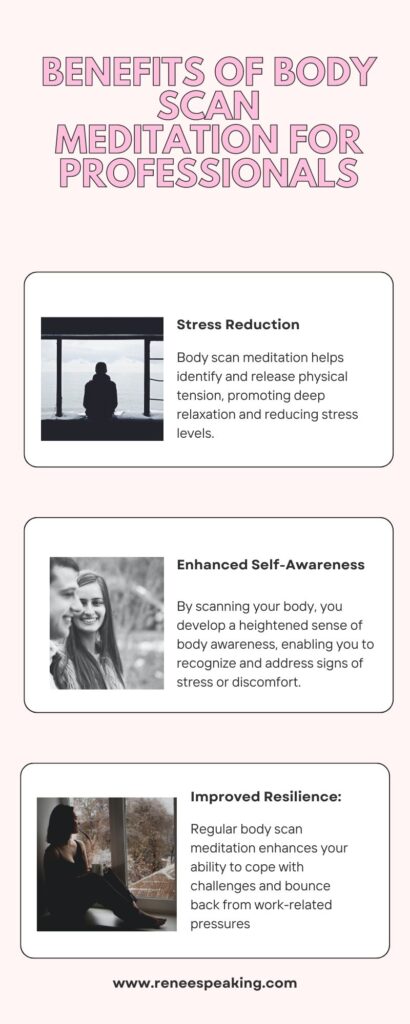This post is about mindfulness exercises for stress.
This post may contain affiliate links, which means I’ll receive a commission if you purchase through my link at no extra cost. Please read the full disclosure here.

Welcome to a world where stress seems to be an icky friend.
Mindfulness exercises show powerful ways to help working professionals, busy parents, and anyone completely stressed out find a break from the pressures of life.
In this blog post, you will learn mindfulness techniques specifically tailored to those navigating the demands of work and family, providing valuable insights on achieving balance in life.
Find ways to boost your mind with these mindfulness exercises for stress.
Mindfulness Exercises For Stress.
1. Deep Breathing for Instant Calm
Taking slow, deep breaths is like a magic button that instantly calms your body and mind. Practising deep breathing makes the body relax and makes you feel peaceful and calm.
But deep breathing does more than help you feel calm. It also makes your focus better. When you pay attention to your breath, it helps you concentrate and think clearly. That means you can do your tasks better and faster.
Deep breathing even helps with anxiety and blood pressure. It makes you less worried and can keep your blood pressure in a healthy range, which is good for your heart.
Related Post: Mastering Your Mind: Learn How to Overcome Depression and Get Out of Bed
If you make deep breathing a part of your daily routine, you’ll see amazing benefits for your body and mind. So take a few minutes each day to practice deep breathing and feel its incredible power to make you feel better.
How to practice deep breathing:
- Find a quiet moment in your day, whether during a lunch break or before you begin your morning routine.
- Sit comfortably or find a cozy spot to lie down.
- Close your eyes and take a deep breath through your nose, allowing your abdomen to rise as you fill your lungs.
- Slowly exhale through your mouth, consciously releasing any tension or stress.
- Repeat this deep breathing pattern for a few minutes, focusing on the sensation of each breath and letting go of distracting thoughts.
- Deep breathing can be your go-to tool whenever stress arises, instantly providing a sense of calm and clarity.
Practical Tips for Incorporating Deep Breathing into Daily Life:

2. Body Scan Meditation for Relaxation
You can relax physically and mentally when you practice body scan meditation. By doing this, you can have a stronger feeling of well-being. Here is how to do it:
- Locate where you may be alone and have some peace and quiet.
- Sit or lie down in a comfortable position.
- You should focus on your body while you close your eyes.
- Slowly scan your body from head to toe, focusing on tight or uncomfortable spots.
- Gently breathe into those areas as you become aware of these feelings, imagining the tightness dissipating.
- Gradually shift your attention from your feet to your head, eliminating the tension that has built up.

Example:
When you are just sitting at your desk, try to focus on the tension you can feel in your shoulders and neck. Quickly scan your body for any other parts of your body that feel tense. Then focus on releasing that tension with each breath you take, and allow your muscles to relax.
Take a deep breath in, and imagine that the tension is physically leaving your muscles when you breathe. As you continue the body scan, you feel a sense of relief and renewed energy. You will be ready to tackle your work with a clearer mind.
For a comprehensive guide on body scan meditation, visit Mindfulness.org.
3. Mindful Walking for Work-Life Balance
Taking time out of your busy schedule for a mindful walk can be really helpful for your overall well-being. It doesn’t have to be a long walk; even a short break or part of your daily routine can work. Find a calm place, like a nearby park or a street with lots of trees.
Related Post: Surviving Unexpected Events: 5 Ways To Keep Going In Adversity
When you go for your mindful walk, pay attention to what’s around you.
Feel the ground under your feet, enjoy the gentle breeze on your skin, and listen to the sounds of nature. Use all your senses and focus on what’s happening right now. Try to let go of any work-related thoughts or worries.
Mindful walking is not just exercise. It’s a chance to connect with yourself and find balance in your busy life. It can help you feel refreshed, clear your mind, and make you feel better. So, take this opportunity to take care of yourself and find calmness in your work and personal life.
Impact of Mindful Walking on Work-Life Integration:
Mindful walking helps you reconnect with your needs. It can create a sense of balance by intentionally engaging with your surroundings and letting go of work-related thoughts.
Work is stressful, let alone the constant to-do list about family and life in your mind all day. Take a moment whenever you are going for a walk to bring calm and peace to your mind.
Mindful walking can help to increase your ability to be fully present in work and family settings. This means you will have improved focus, and your life will feel less chaotic.
Explore this article on mindful walking techniques for the working professional Work-Life Balance Tips
Final Thoughts On mindfulness Exercises for stress
Incorporating mindfulness exercises into your busy work and family life can be an easy and efficient way to take hold of your stress levels.
The practices discussed in this blog post—deep breathing, body scan meditation, and mindful walking—offer practical and effective strategies to help you find balance, reduce stress, and nurture your well-being.
Use these mindfulness practices and feel the difference in can make in your everyday life.
This post was about mindfulness exercises for stress.

